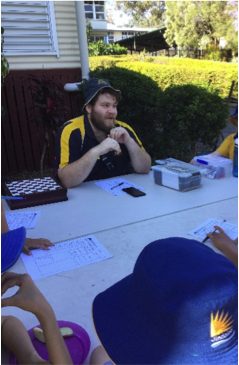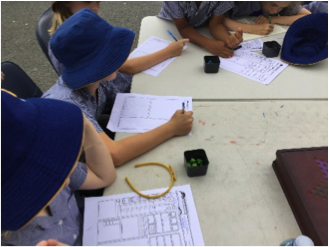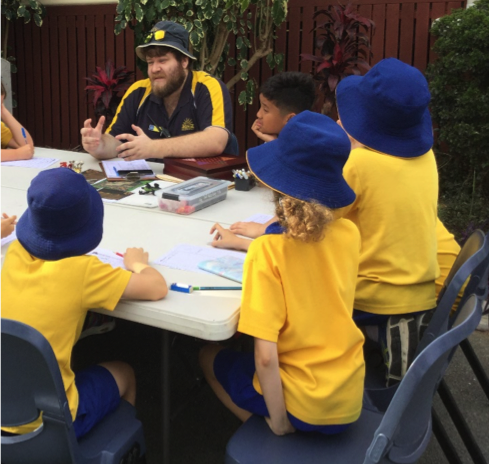 Every so often a new trend emerges amongst the children and even the hippest and coolest of our Educators are left trying to catch up (Among Us anyone?). It was an exciting moment for our Educator, David, when roles were reversed. For those of you who have had Dungeons and Dragons (DnD) mentioned in your house recently, you have David to thank. If you are still scratching your head about what it actually is, don’t worry, you’re not alone.
Every so often a new trend emerges amongst the children and even the hippest and coolest of our Educators are left trying to catch up (Among Us anyone?). It was an exciting moment for our Educator, David, when roles were reversed. For those of you who have had Dungeons and Dragons (DnD) mentioned in your house recently, you have David to thank. If you are still scratching your head about what it actually is, don’t worry, you’re not alone.
Put simply, Dungeons & Dragons is similar to a “choose your own adventure” story, enacted in real time. It is driven by the children’s imagination and evolves based on the choices they make individually and as a group. Anything is possible, but the roll of a dice makes some outcomes more probable than others. Over the last two months, we have spent our afternoons creating adventurers, picturing towering castles, finding mysterious creatures and solving challenges presented throughout our journey.
 But Dungeons and Dragons has become so much more than just a fun afternoon activity. Children have been learning about the power of their own imagination, with each participant having a role in telling this story. This ability to use their own creativity to solve problems often leads to great in-game moments, that the players later reflect on fondly. As the week’s progress, we have seen an immeasurable increase in children’s confidence and watch them marvel at what they are able to conceive.
But Dungeons and Dragons has become so much more than just a fun afternoon activity. Children have been learning about the power of their own imagination, with each participant having a role in telling this story. This ability to use their own creativity to solve problems often leads to great in-game moments, that the players later reflect on fondly. As the week’s progress, we have seen an immeasurable increase in children’s confidence and watch them marvel at what they are able to conceive.
I often have the chance to overhear the conversations at D & D, so it’s of no surprise to me that our storyteller David reflects on the speech, language and communication development that occurs across the game. For the teacher’s to be on our team, it has been a really interesting way to see how these skills develop naturally outside of formalised classroom learning. DnD actively encourages curiosity, problem solving, hypothesising, investigating, enthusiasm, persistence and reflexivity (we could keep listing them, trust me!). This has been a wonderful complement to the skills our learners gain at school.
In what has been a completely unexpected outcome, we are starting to draw some parallels between DnD and real life. In DnD no two characters are the same, but whether you are Leedo the Dwarf or Alia the Archer, you offer something unique to the group, you have strengths that are necessary to complete challenges but at times, you need the support of those around you. Across the game, children learn to interact with peers, take turns to share ideas, celebrate other’s successes and value the diverse contributions of team members. The best part of D & D is that there is no right or wrong path. The DnD world is hugely diverse, both in its fantasy world and in the group of players involved in creating this.
For us Educators, it has been a really valuable learning curve in never assuming what the children will be interested in (as if TikTok hadn’t taught us that already!). We could never have predicted the longevity or popularity of this activity. It has also been a fantastic reminder to draw upon our Educator’s skills. We too, are hugely diverse in our backgrounds, interests and strengths and it has been great for children to recognize this. I have thoroughly enjoyed witnessing our DnD club unfold and look forward to bringing you more information about what comes next.

